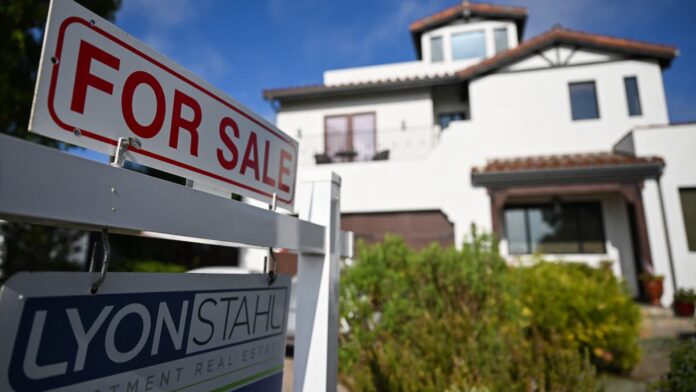A “For Sale” sign sits outside a home for sale in Los Angeles, California, on August 16, 2024. The U.S. real estate industry's rules on brokerage commissions will change on August 17 as part of a legal settlement between the National Association of Realtors and home sellers. (Photo by Patrick T. Fallon / AFP) (Photo by PATRICK T. FALLON/AFP via Getty Images)
Patrick T. Fallon | Afp |
The supply of homes for sale is still low by historical standards, but is increasing rapidly.
According to a new report from Realtor.com, active listings nationwide increased 36% in August compared to the same month last year. This was the 10th consecutive month of year-over-year growth. However, supply is still 26% lower than it was in August 2019, before the pandemic.
While supply is growing, sellers are pulling back. There were fewer new listings in August (-1%) than in the previous year. The growing supply is due to homes being on the market longer.
“This August, as the number of homes on the market continues to rise, price cuts are more frequent, asking prices are falling and homes are taking longer to sell,” wrote Danielle Hale, chief economist at Realtor.com, in a press release. “The Fed's widely anticipated rate cut has already led to lower mortgage rates, but it appears some buyers and sellers are waiting for further cuts.”
This can be seen in the weekly mortgage data. According to the Mortgage Bankers Association, applications for loans to purchase a home have fallen by about 4% compared to the same period last year. And this despite the fact that the average interest rate for the 30-year fixed-rate mortgage is now about 75 basis points lower than it was then.
While supply is increasing in most cities, some cities are seeing huge increases. In Tampa, Florida, inventory is up more than 90% year over year; in San Diego, it's up 80%; in Miami, it's up 72%; in Seattle, it's up 69%; and in Denver, it's up 67%.
Regionally, active listings increased 46% in the South, 35.7% in the West, 23.8% in the Midwest and 15.1% in the Northeast.
The increased supply means homes stay on the market longer. A typical home spent 53 days on the market in August, seven more days than the previous year and the lowest August pace in five years.
“We've found that when the number of active listings increases by 5.5 percentage points year-over-year, the market slows by about a day,” said Ralph McLaughlin, senior economist at Realtor.com. “Given the rapid inventory growth we're currently seeing, that can mean changes in some markets that are on the market up to 15 to 20 days longer than last year.”
More supply and longer sales times ultimately lead to lower prices. The share of homes with discounts increased to 19% in August, up 3 percentage points from August of the previous year. The median list price decreased 1.3% year-over-year. This is partly due to the mix of homes on the market, with more smaller homes being offered. Prices are still 36% higher than in August 2019.














